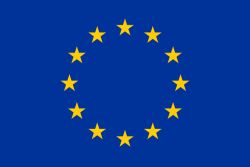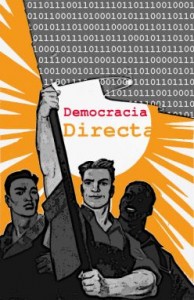 With digital diplomacy the focus of my last post, this time around we are looking at digital democracy – two topics that seem to operate on either side of the same coin. Once again, I was thankful to attend another excellent session held at Europe House this time on the question: ‘Can Digital Democracy Work?’
With digital diplomacy the focus of my last post, this time around we are looking at digital democracy – two topics that seem to operate on either side of the same coin. Once again, I was thankful to attend another excellent session held at Europe House this time on the question: ‘Can Digital Democracy Work?’
The session was inspired by the recent European Citizens’ Initiative that emerged out of the Lisbon Treaty earlier this year. The question is clearly one that we come to with our own personal perspective and biases, and a large part of the session was focused on various attempts at political petitioning systems set up by the likes of the House of Commons. This then extended into the petitioning realms of grassroots campaigners such as those mobilised by 38 Degrees which, through their adoption of different strategies for change, allowed the conversation to transition into more general forms of citizen participation and activism that culminated in an excellent and insightful presentation by a representative of European Alternatives. All of this found itself tied back down at the end into the legislative actions taking place within the EU, in particular the work of the European Economic and Social Committee (EESC) and efforts building up to the 2013 European Year of Citizens.
In trying to unpick some of the underlying themes that emerged for me, what I was immediately struck by was a polarity (or perhaps more accurately, a continuum) between attempts to integrate digital infrastructure into existing political systems on one side and the use of those same tools to circumvent traditional policy channels and create new systems on the other. Furthermore, there seemed to be a disconnection between the two in the way the term ‘democracy’ was defined and engaged with. Organisations such as 38 Degrees (which sits more towards the integration side, albeit activist in nature) and European Alternatives (which leans more towards the creative side through cultural innovation) highlighted how there is a need to act differently depending on whether the desired goal is integration with or re-creation of traditional political structures.
The central problem facing the former is that our current political structures often lack the dynamic flexibility to respond to groundswells of public sentiment effectively, and also have a tendency to dismiss certain sectors as politically immature. On the other hand, efforts to circumvent these organisational structures have difficulty achieving the scales necessary to see widespread implementation of their goals and can often fall foul of ideological hubris or an over-reliance on contrarian rhetoric. On the one side we have obtuse government petitioning systems that can come across as trite ways to appease public sentiment; whilst on the other we can see high levels of interest in online (cut and paste) campaigning that finds it difficult to coalesce into significant social transformation.
 To be fair, there are plenty of successful examples across the whole spectrum of different activities that can be pointed to (and 38 Degrees in particular seemed keen to remind us of the breadth of their initiatives and those campaigns that saw success) – but this difficult dynamic between models for integration and models for re-creation seems to me to be leading to problems with effective uptake of citizen initiatives whether from lack of government willingness or low-levels of engagement from the general public.
To be fair, there are plenty of successful examples across the whole spectrum of different activities that can be pointed to (and 38 Degrees in particular seemed keen to remind us of the breadth of their initiatives and those campaigns that saw success) – but this difficult dynamic between models for integration and models for re-creation seems to me to be leading to problems with effective uptake of citizen initiatives whether from lack of government willingness or low-levels of engagement from the general public.
The other key issue surrounding discussions on ‘digital democracy’ is that we tend to place boundaries around the phrase that ultimately limits our appreciation of the vast number of available avenues for social engagement. Modern democracy isn’t only about influencing laws and policy through a process of voting and representation; but rather should be seen more broadly as the way in which we use our personal and social autonomy to alter the cultural landscape around us. This includes traditional democracy of the political kind; but it also includes commercial democracy (through direct consumer action), information democracy (through freedom of the internet and media plurality), and cultural democracy (through the formation of common-yet-diverse identity and obligation) to name just a few of the more obvious.
Democracy is at its core about the ability to participate as equals, even in systems that create various levels of inequality – in fact, you could say that the primary goal of modern democracy is to find ways to navigate these inherent systemic inequalities (which I don’t believe can be truly overcome on any permanent basis…unless I’m having a particularly utopian kind of day) and provide mechanisms through which they can be subverted when a broad enough segment of society deems it necessary to do so.
The digital aspect of this conversation is immense, as it is with every other facet of our lives, but we are quickly reaching the point where the distinction between offline and online channels could become redundant and the dichotomy falls out of common use. Many recent grassroots movements are seeing instantaneous and continuous feedback loops between online communication and offline action, allowing not only a global presence but a global perspective to emerge organically (a term I use very much on purpose). This kind of hyper-connected cultural exchange is allowing paradigm shifts in public consciousness to occur in the space of weeks or months rather than decades, and the problem we face now is that we don’t yet have organisational forms that are impacting, accessible and socially embedded whilst at the same time capable of keeping up with such rapid change.
Thus we are able to view grassroots movements such as Occupy or 38 Degrees as ineffective dalliance or predominately made up of ‘slacktivists’ looking for a quick ego fix; whilst at the same time see our traditional political representatives and policy makers as out of touch, non-communicative and more concerned with election cycles than the betterment of society. Both sides of this particular dichotomy really just represent different toolsets through which we hope to achieve collective understanding and purpose. Our tendency to see them in opposition is doing us all a huge disservice at a point in history where it is becoming increasingly clear that our social structures aren’t quite keeping up with our communications capacity. Not only is it doing a disservice, but it also overlooks the symbiotic relationship that the integrationists and the recreationists (as I’m going to refer to them) now have with one another. The two modes of action are inextricably linked and the boundaries increasingly blurred in a frenzy of conceptual co-operation and opposition of which the resulting transformation is greater than the sum of its (necessary and influential) parts.
 What we’re seeing now is recognition that we have entered a transitional period in which the very foundations of civic participation and collective construction of identity have been set free from their historical limitations. From this point we can begin to conceive of new forms of ‘democracy’ that seek to incorporate plurality not only of perspective but also social form and function. This is proving difficult to neatly fit into long-held conceptions of left vs. right politics, or even more so when it comes to the manner in which political legislation is drafted, lobbied and implemented.
What we’re seeing now is recognition that we have entered a transitional period in which the very foundations of civic participation and collective construction of identity have been set free from their historical limitations. From this point we can begin to conceive of new forms of ‘democracy’ that seek to incorporate plurality not only of perspective but also social form and function. This is proving difficult to neatly fit into long-held conceptions of left vs. right politics, or even more so when it comes to the manner in which political legislation is drafted, lobbied and implemented.
However, the beauty is that new forms will emerge through this continuous process of influence and cross-pollination to the point that where we end up will not be identifiable as coming from a particular group or subset of society…rather it will emerge from the ethereal web of our collective being – a kind of crowd-sourced global consciousness. What is vitally important at this stage is to ensure that we enable as large a proportion of our global society to have access to the tools of participation so that each one of us can find a level of connectivity and influence that moves beyond our physical and economic circumstances and engages more with our social, spiritual and intellectual being.
This level of hyper-connectivity not only allows a crowd-sourced global consciousness but demands it. You could even say that this level of global crowd-sourcing on all aspects of our public lives is what will lead to the formation of a future conscience – a result that would certainly enable us to answer positively the question ‘can digital democracy work?’ The fascinating – and somewhat terrifying – aspect will be to see whether this universal process can overcome everything standing against it, those negative and destructive aspects deeply embedded in the human condition. Digital democracy can work, but will it?




